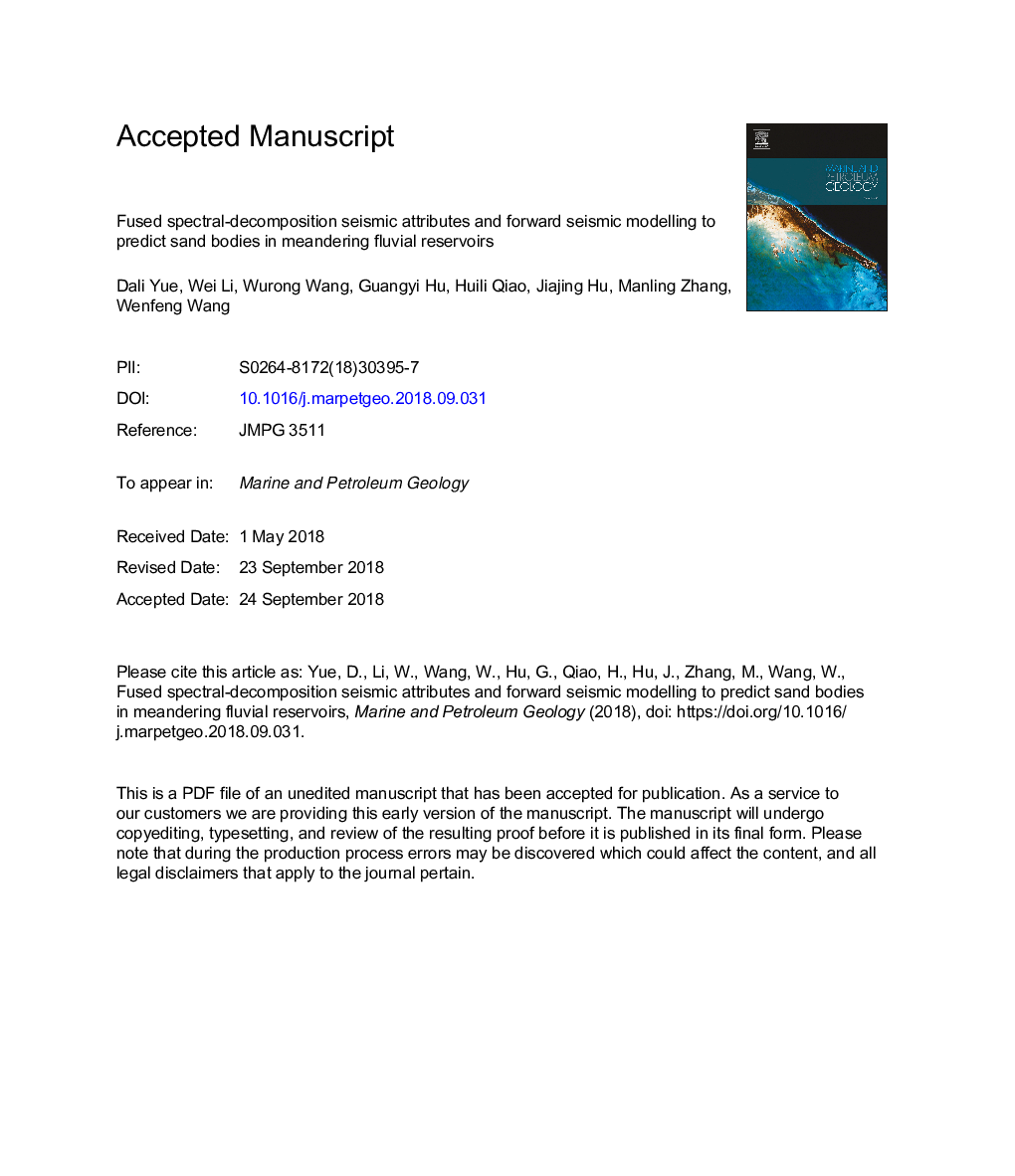| کد مقاله | کد نشریه | سال انتشار | مقاله انگلیسی | نسخه تمام متن |
|---|---|---|---|---|
| 11010121 | 1812797 | 2019 | 43 صفحه PDF | دانلود رایگان |
عنوان انگلیسی مقاله ISI
Fused spectral-decomposition seismic attributes and forward seismic modelling to predict sand bodies in meandering fluvial reservoirs
ترجمه فارسی عنوان
ویژگی های لرزه ای طیفی تجزیه شده و مدل سازی لرزه ای پیشین برای پیش بینی ذرات شن و ماسه در مخازن جریان غشایی
دانلود مقاله + سفارش ترجمه
دانلود مقاله ISI انگلیسی
رایگان برای ایرانیان
کلمات کلیدی
ویژگی های لرزه ای طیفی تجزیه شده با هم ترکیب شده، الگوریتم ماشین بردار پشتیبانی، مدل سازی لرزه ای به جلو، مدل ماسه ماسه ای انباشته شده مخزن ذخیره سازی مخزن، حوضه بوژونگ،
موضوعات مرتبط
مهندسی و علوم پایه
علوم زمین و سیارات
زمین شناسی اقتصادی
چکیده انگلیسی
Understanding the hierarchical architectural elements of fluvial sand bodies is important for planning their development strategy and to enhance oil recovery. Red-Green-Blue (RGB) blending of multiple seismic attributes and forwarding seismic modelling are commonly used in the analysis of compound sand bodies. However, RGB blending of multiple seismic attributes can only qualitatively describe the boundaries and thickness of sand bodies. The forward seismic modelling techniques previously documented in the literature are not effective when depicting the geometry of, and stacking relationships between, sand bodies (i.e., reservoir compartmentalisation). Hence, we propose in this work a new workflow that combines fused spectral-decomposition seismic attributes (SDSAs) and forwarding seismic modelling to quantitatively predict sand thickness, and to characterise stacking relationships between sand bodies. First, we employ a Support Vector Machine (SVM) algorithm to fuse high, middle, and low frequency components (attributes) of seismic data so as to quantitatively predict the thickness of sand bodies. Second, we define the seismic waveform response patterns corresponding to the typical conceptual stacked sand bodies. With the constraints of waveform patterns and predicted sand thickness (fused SDSAs), the geometry and stacking relationships of the sand bodies are characterised by forward seismic modelling. To illustrate the effectiveness of our proposed workflow, we apply it to the Neogene Minghuazhen Formation (Nm) of the QHD 32-6 oil field, Bohai Bay Basin, China. We define five architectural elements of a meandering fluvial reservoir by analysing the hierarchy of sand bodies using our workflow. The predicted sand bodies in this workflow were further proven by horizontal drilling and production data.
ناشر
Database: Elsevier - ScienceDirect (ساینس دایرکت)
Journal: Marine and Petroleum Geology - Volume 99, January 2019, Pages 27-44
Journal: Marine and Petroleum Geology - Volume 99, January 2019, Pages 27-44
نویسندگان
Dali Yue, Wei Li, Wurong Wang, Guangyi Hu, Huili Qiao, Jiajing Hu, Manling Zhang, Wenfeng Wang,
